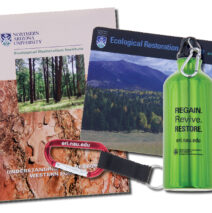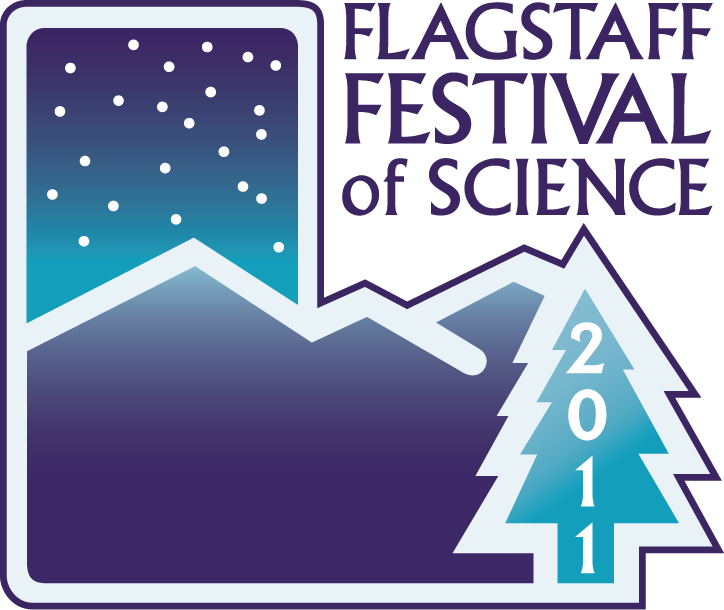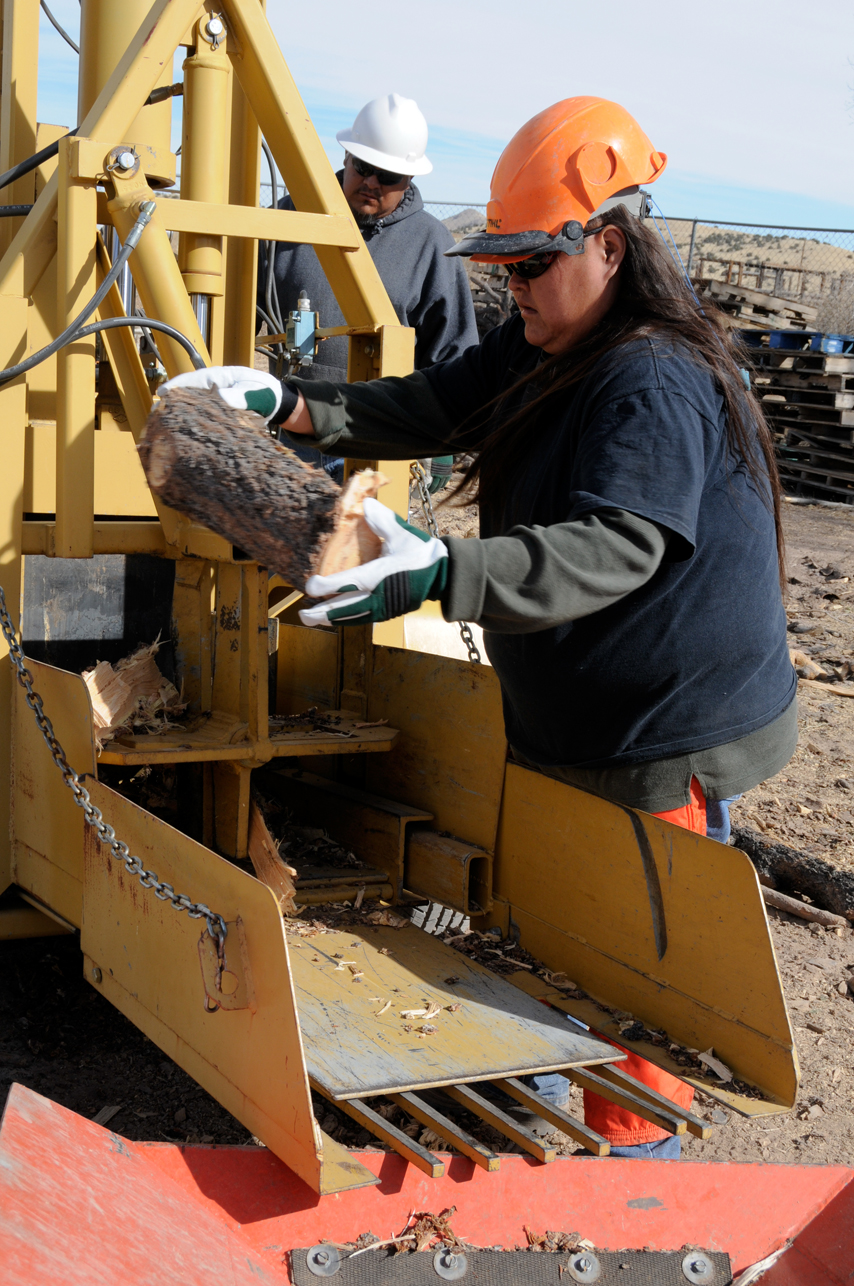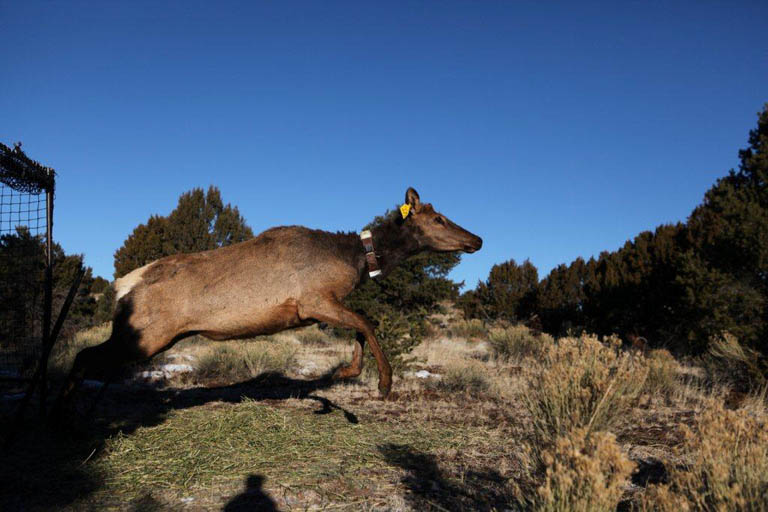Babbitt Ranches Projects
Babbitt Ranches is celebrating its 125th year as a pioneering enterprise rooted in the Old West. What began with five Ohio businessmen and a dream of owning a cattle ranch is a thriving land management company spanning northern Arizona with interests in minerals, wind power and ecological research. Today, its award winning Hashknife Brand American Quarterhorses are among the most sought after rodeo and working horses in the country. Babbitt Ranches Hereford grass-fed cattle command top dollar and this fifth generation family business is recognized nationally for its land ethic, conservation practices and commitment to its constitution. In the open expanses of northern Arizona, Babbitt cowboys continue the work of ranching on horseback, the way it was done in the 1880s. Read Constitution written by Bonnie Stevens Read Newsletter Series written by Bonnie Stevens Read Redlands Crossing Article in Horizons...
Read MoreEcological Restoration Institute at NAU
Ecological Restoration Institute at NAU is committed to regaining, reviving and restoring the wildlands of the American West. Through an understanding of pre-settlement forest conditions, today's unnaturally intense wildfires and research of fire-prone ecosystems, ERI Executive Director Wally Covington and the ERI scientists are providing information to land managers in an historic effort to create healthy, biologically diverse landscapes that are assets, instead of threats, to future generations. [Show as...
Read MoreFlagstaff Festival of Science
Science Festival Illuminates Far Reaches of the Universe FLAGSTAFF, Ariz. – The 2011 Flagstaff Festival of Science, Sept. 23 – Oct. 2, promises celestial fireworks, soaring gas pillars and mystic mountains as Science Illuminates the far reaches of the universe through the windows of the Hubble Telescope. NASA astronaut and physicist Dr. John Grunsfeld is scheduled to kick off the free 10-day event as the keynote presenter on Friday, Sept. 23. Grunsfeld has circled our planet hundreds of times and conducted history-making space walks for surgical repairs on the orbiting telescope. As deputy director of the Hubble Space Telescope Science Institute, Grunsfeld is among the first to experience the dazzling complexity of cosmic chaos occurring in space. He’ll be sharing Hubble’s expansive collection of spectacular images such as star births in the extreme, sheets of debris, shredded remains of old supernovas and light echoing from supergiant stars. Among the Festival’s 2011 highlights, Lowell Observatory will be celebrating the Discovery Channel Telescope’s First Light; the Museum of Northern Arizona will present Grand Archaeology – Excavation and Discovery along the Colorado River; Flagstaff Medical Center will offer its Fantastic Voyage; Northern Arizona University will conduct Mountain Campus Science and Engineering Day; and the U.S. Geological Survey will host a field trip to the Apollo mission training grounds. Also in the lineup are star parties at observatories and open houses at research stations. Science-based organizations such as W. L. Gore & Associates will share their discoveries and innovations at Science in the Park and local scientists will offer more than 100 presentations to school children. In addition, the Festival will promote healthy forests through walks and talks as a designated United Nations International Year of Forests event! “With our theme Science Illuminates we have such an opportunity to show how reflected light can reveal the mysteries of distant planets, stars, nebulae and galaxies,” said Festival President Winnie Ennenga. “Science also illuminates ecological processes that are so essential for life here on our planet. The 2011 Festival will no doubt inspire and fascinate the next generation of astronomers, biologists and doctors.” Support from more than 70 businesses, organizations and individuals makes the Flagstaff Festival of Science possible. Among the many sponsors, funding comes from the City of Flagstaff BBB revenues, Flagstaff Cultural Partners, the Flagstaff Community Foundation, W. L. Gore & Associates, Blue Cross Blue Shield of Arizona and Northern Arizona University. For more information, visit the Web site at www.scifest.org. [Show as...
Read MoreCutting Edge Jobs
April 15, 2011 Contact: bonnie.stevens@gmail.com For Immediate Release 928-380-4349 Cutting-edge Jobs Supported by Old Wood Flagstaff, Ariz. – Hope for forests and communities at risk is spreading like wildfire in an isolated village south of Albuquerque. Northern Arizona University ecologists say what’s happening on the Alamo Navajo Reservation could well be a model for forest restoration across the Southwest where there are too many trees and not enough jobs. In a small lumberyard in Socorro, N.M., young adults are learning how to cut down trees, operate logging equipment and split firewood. Derek Padilla is the crew leader. “This project is helping me because it’s near my home on the reservation.” The Alamo Navajo Reservation consists of only about 2,000 people. Nearly 70 percent are unemployed and most are living below the national poverty level. Nearby is the Cibola National Forest, unnaturally thick with pinyon and juniper trees. The area is considered New Mexico’s most dangerous place for homes and businesses during fire season. “We’ve removed natural fire from a lot of the ecosystems throughout the West,” says Wally Covington, Arizona’s director for the Southwest Ecological Restoration Institutes and Regents’ Professor. “That has allowed forests to build up these ground fuels and ladder fuels and that’s what we’re trying to deal with across millions of acres. We’re trying to mimic what science tells us would be a more natural condition.” To achieve this desired condition, Covington says a trained labor force and a market for small diameter trees will be essential. In the Alamo Navajo Project, SWERI is providing training along with equipment, such as wood splitters and yarders. The collaboration also includes financial and in-kind assistance from the U.S. Forest Service. “A similar model could help facilitate efforts in northern Arizona where the nation’s largest forest restoration project, the Four Forest Restoration Initiative, is in the planning stages,” says Covington. The 4FRI aims to treat some 2.4 million acres of ponderosa pine across the Mogollon rim during the next 20 years. NAU researchers are providing ecological restoration science findings to the Forest Service to achieve landscape-scale forest health. “We now have people here who are trained in felling, trained in primary processing and trained in restoration monitoring,” says New Mexico’s SWERI Director Andrew Egan. “They are really making New Mexico forests healthier and making New Mexico a safer place to be because we are reducing the impacts of potential wildfires.” With the restoration institutes, the Alamo Navajo School Board has created a wood products program out of trees that nobody wanted. “We sell firewood all over the country,” says the school board’s Natural Resource Specialist Bill Ferranti. “Our biggest market is in west Texas. We shipped some to Chicago. We shipped some to North Carolina. We shipped more than 300 cords last year.” It’s a collaboration supported by Old Wood. Owner David Old is building a business out of sticks and branches in Las Vegas, N.M. “The whole plant is really scaled and geared for making flooring from smaller trees. We are not about cutting down the big trees.” If his idea stacks up, Old will construct a new foundation for some 50 employees in a $2-million-dollar a year operation. Old Wood’s first order for pinyon wood flooring cut by the Alamo Navajo crew is scheduled to go to a San Francisco restaurant. ### Feature...
Read MoreCollars and Corridors
Elk are roaming around the woods with collars around their necks. In the forest near Flagstaff, elk are being outfitted to tell researchers what they and other animals need to navigate through urban sprawl, climate change and large restoration projects. For Arizona Game and Fish Department wildlife biologist Jeff Gagnon, the job of collaring an elk is somewhat like a rodeo event. Within minutes, he and a team of wildlife managers can calm a frightened animal that might weigh as much as a thousand pounds. “We fit the collar to make sure the animal has some space and isn’t being choked,” he says. The collar is programmed to fall off in a few months. But in the meantime, every two hours a GPS unit is sending signals to satellites that are sending signals to biologists. Gagnon has been tracking some 130 elk around major highways including interstates 17 and 40. “We know where the animals are, what kind of habitat they are using and what barriers are stopping them. For a lot of animals when we fragment their habitat, they can’t get to resources like summer or winter range. We also run the risk of isolating or breaking up the herd, which can lead to a smaller gene pool and a weaker species.” Researchers like Northern Arizona University’s Dr. Paul Beier, a conservation biology and wildlife ecology professor in the School of Forestry, says this information is critically important to keep animals from stepping into danger or even extinction. “With climate change, we have the situation where habitat is literally moving out from under the feet of wildlife,” he says. “In order for these species to stay where they are, in terms of a healthy population, they have to move.” Beier is developing maps detailing links for wild areas, or wildlife corridors, to help land managers understand how animals move across the land. “We’re creating landscapes that are more permeable than the landscapes we had a decade or two decades ago,” he says. “If you provide habitat for the large species, you bring the others along,” says Arizona Game and Fish Department Habitat Program Manager Sarah Reif. “Elk, mule deer, pronghorn antelope – these are the big guys we manage for because of public safety on highways and roads, and because they have the biggest home ranges.” Pronghorn have long been a symbol of the West, but researchers say barriers like canals, fences and highways have had a substantial impact on the population. “In Arizona, the numbers declined from about 45,000 animals in the early 1900s to roughly 7,500 in 2002.” says Reif. “Since then we have recovered the population to somewhere around 11,000 but we still have a lot of work to do to connect pronghorn habitats.” With information about wildlife movement, highways are becoming less of a hindrance, and safer for wildlife and people. Groups like the Arizona Department of Transportation, Elk Society, Rocky Mountain Elk Foundation and Federal Highway Administration are funding research and passageways. For example, along State Route 260 near Payson, highway improvement projects have included wildlife crossings. “Animals are using the crossings,” says Gagnon, “and collisions between elk and motorists have been reduced by at least 85 percent.” The Ecological Restoration Institute at NAU’s Executive Director Dr. Wally Covington says managing for wildlife corridors is increasingly important as forests are restored on a landscape scale. “Across hundreds of thousands of acres, natural habitat can be restored. Wildlife can self-regulate. Predator prey dynamics can keep populations in a sustainable, steady state that’s characteristic of the evolutionary environment.” Wearing high-tech necklaces, today’s elk may well...
Read More




